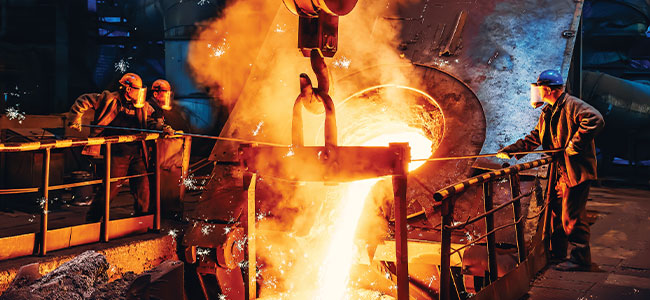
Protecting Workers in High-Heat Industries
Safeguarding workers in high-heat settings with the right protective clothing involves understanding a bit about heat transfer, the work being done, and the best materials and technologies for the job.
- By Mary Ann Merikoski
- Mar 01, 2024
If you’re a safety professional, you likely come across heat hazards regularly. There is much focus these days on heat stress and exhaustion — in fact, the National Institute for Occupational Safety and Health (NIOSH) has published a recommended standard for occupational heat stress, along with a PPE standard requiring every employer in general industry to conduct a hazard assessment to determine the appropriate PPE to be used to protect workers from the hazards identified (29 CFR 1910.132(d)).
OSHA recommendations for heat stress include proper hydration, frequent breaks, and avoiding the midday sun. But what if high heat is intrinsic to the task being performed, and the work can’t be done without it? Hot work happens in a multitude of environments, from restaurant kitchens to auto assembly plants to smelting blast furnaces.
In the realm of hand protection, the EN407 Standard developed in Europe but recognized internationally established a rating system that, based on various component test methods, gives clear guidance on whether a product meets the requirements of a specific work environment.
This article will share some high-level insights into the various types of heat most commonly found in industrial environments, and questions to ask as you work through the process of selecting the right protective equipment.
A (Little) Bit of Science
There are three primary ways heat is transferred: convection, conduction and radiation.
• Convection is heat transfer through a fluid (liquid or gas). Ice melting or the heat rising over a fire are examples of convective heat transfer.
• Conduction is heat transfer through kinetic energy that passes from adjacent particles. For example, a pot of water sitting on a hot stove burner is heated through conduction.
• Radiation is heat transfer through electromagnetic waves. Radiant heat is heat that you feel when you are near a heat source, like when you’re sitting near a campfire.
When selecting PPE to address thermal hazards, it’s important to classify the kind of heat transfer involved as a preliminary step — especially when there are multiple types of heat in play.
A foundry worker might spend part of their day next to a furnace bringing metals to the melting point and later pouring that molten material into molds, with the risk of molten splash. A welder might be working outside in cold weather, but still need protection from sparks and slag.
This article originally appeared in the February/March 2024 issue of Occupational Health & Safety.